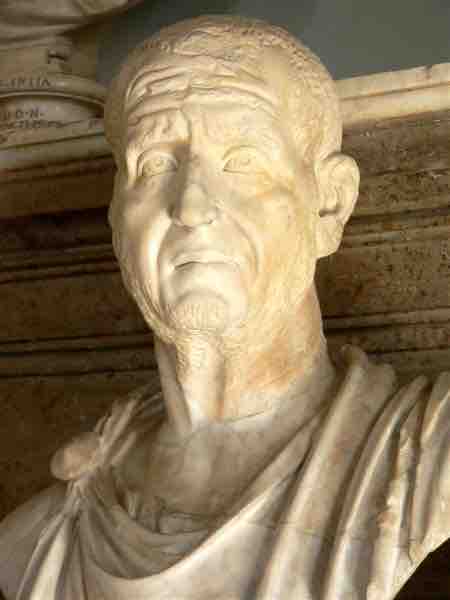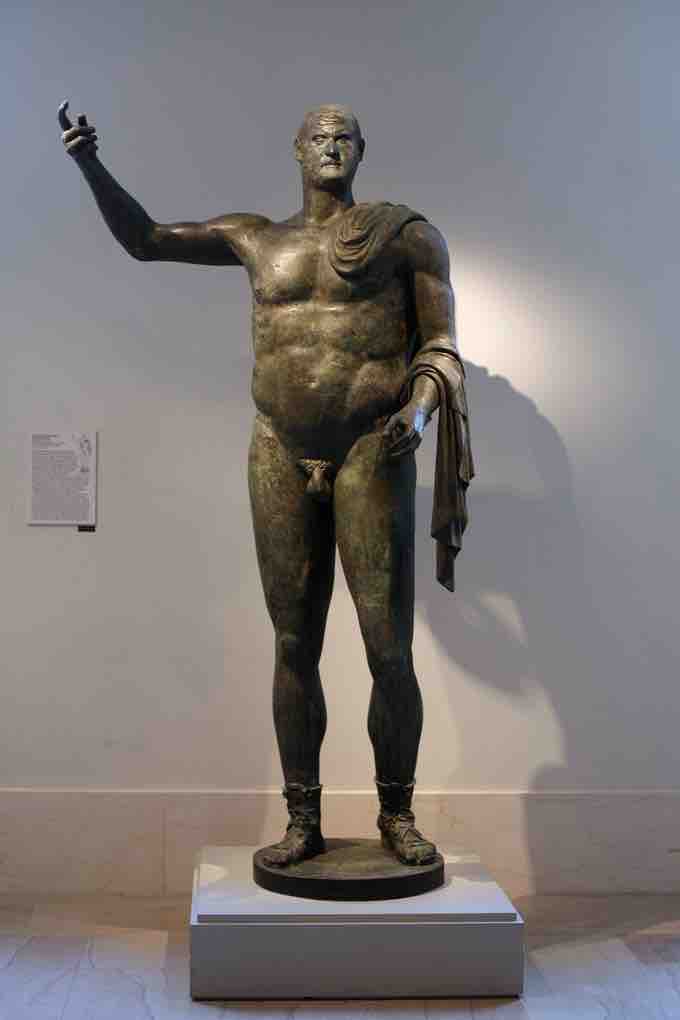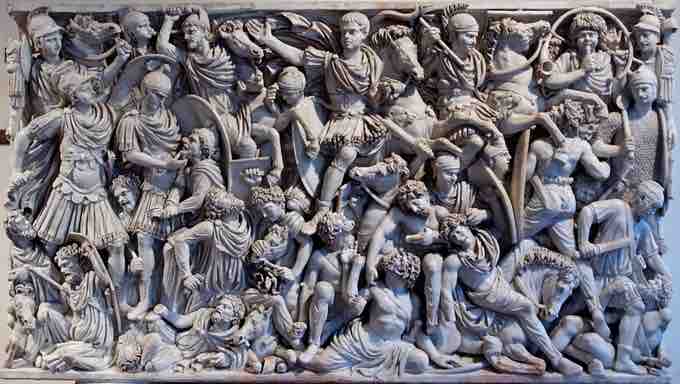After Caracalla
Emperor Caracalla was assassinated while campaigning against the Parthians in 217 CE. He was quickly succeeded by a member of his personal guard, Macrinus, who ruled for less than a year before his own death. Elagabalus, the grandson of Julia Domna's sister, and his cousin Alexander Severus were the last in the Severan line. Both men managed to maintain control of Rome, and Alexander Severus was even able to improve the economic condition of the empire. Following Alexander's death at the hands of his own soldiers, Rome plunged into a long period of uneasy, rapid successions referred to as the Crisis of the Third Century, a crisis that lasted for fifty years.
Soldier Emperors
The first 26 emperors of this period were generals who either proclaimed themselves or were officially acknowledged as the emperor. Their reigns lasted from a couple of months to a couple of years. The fact that they were all generals in the Roman army underscores the military insecurity of the empire at this time. Legions of soldiers were often fighting each other in support of one emperor or another, instead of protecting the border or trade routes. Roman power was still centered in Rome. Thus, the only building project that succeeded through this period was the building and maintaining of the city's Aurelian Wall, under the emperor Aurelian (r. 270-275 CE).
The portraits of Trajan Decius (r. 249-251 CE) and Trebonianus Gallus (r. 252-253 CE) serve to illustrate the instability of the period and the need for soldier-emperors to assert power to maintain some semblance of control. Trajan Decius's portrait at first seems to take its artistic style from Republican veristic portraiture, but a closer look reveals something else. Instead of depicting a hyper-realistic portrait of an old and wise man, this portrait reveals the anxiety and nervousness of the emperor. His brow is furrowed with worry and wrinkles, and his eyes and mouth impart a feeling of fear and anguish.

Trajanus Decius
Bust of Trajanus Decius.
The portrait of his successor, Trebonianus Gallus takes a different style, relying on old sculpture and narrative conventions to depict the emperor as a contemporary hero. This larger-than-life bronze statue depicts a muscled, nude man with his right arm raised in a gesture of speech. He seems to be in adlocutio pose, addressing the troops or perhaps the people of Rome. His head is notably smaller than his torso and disproportional to his body. This places emphasis on his bulk and reminds the viewer of the emperor's power and the stability he hoped to create.

Trebonianus Gallus
Portrait of Trebonianus Gallus.
Late Antique Art: The Ludovisi Sarcophagus
Sculpture during this period demonstrates the style and design of Late Antique art that was initially developed during the late second century CE from plebeian models. The emergence of the style corresponds with the social, political, and economic upheaval of the empire that began during the reign of Commodus. This style removes Classical conventions of realism. It pushes its characters into the foreground and almost entirely removes the background.
In the scenes shown on the Ludovisi Sarcophagus, the undercutting of the deep relief exhibits virtuosic and very time-consuming drill work that conveys chaos and a sense of weary, open-ended victory. It differs from earlier battle scenes on sarcophagi in which more shallowly carved figures are less convoluted and intertwined. Unlike earlier Roman depictions of warfare, this scene does not differentiate the general by his attire or engagement in battle. Rather, he is only slightly larger than the figures around him.

Ludovisi Sarcophagus
Ludovisi Sarcophagus. Marble, Rome, Italy. c. 250-260 CE.
From the late second century, Roman art increasingly depicted battles as chaotic, packed, single-plane scenes emphasizing dehumanized barbarians subjected mercilessly to Roman military might, at a time when in fact the Roman Empire was undergoing constant invasions from external threats that led to the fall of the empire in the West. Although armed, the barbarian warriors, usually identified as Goths, are depicted as helpless to defend themselves.
After the Soldier Emperors
The Crisis of the Third Century continued after the reign of the Soldier Emperors as the title of emperor was auctioned off to the highest bidder by the Praetorian Guard and various men, not always generals, from around the empire seized power for brief periods of time. This process continued until the reign of Diocletian, beginning in 284 CE.